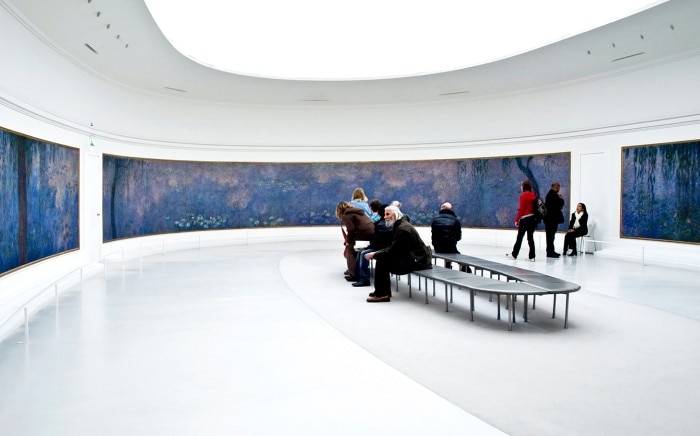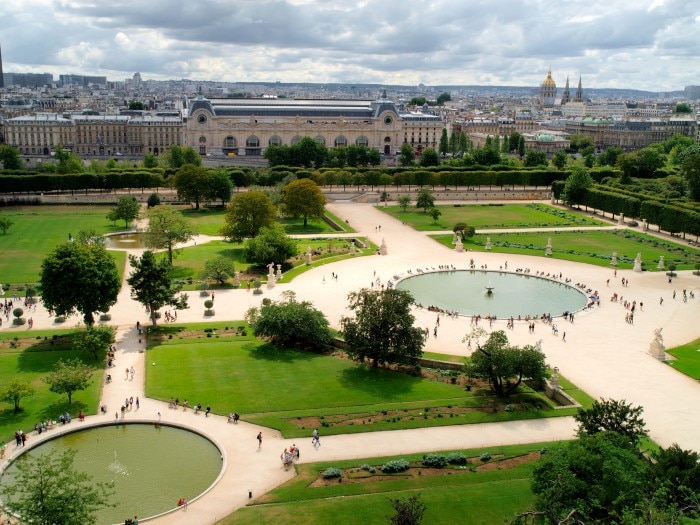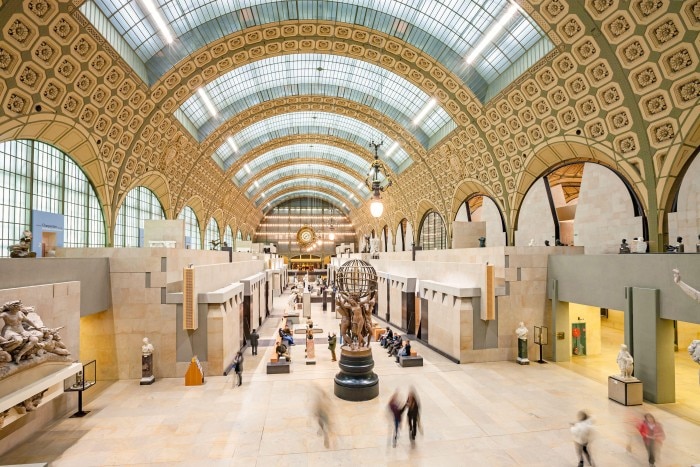
Paris - Wallpaper, or Work of Art?
Explore Life Science
- Off the Bench
- Exploring Life
With its approximately 160 exhibition centers and more than 2,000 sculptures, statues and monuments in public spaces, Paris resembles one giant museum. Any stroll inspired by the arts will always lead back to Claude Monet, the once underestimated originator of impressionism.
Nostalgic green space in the city center
Following the visit to the Musée Marmottan, we take the Métro to the city center – passing stations adorned with beautiful tiles, curved inscriptions and ornate wrought-iron entrances. All this is as characteristic of Paris as the traffic on the Place de la Concorde that circles the Egyptian obelisk with its gold-plated tip at all times of the day and night. Leaving Métro Tuileries, it’s only a few steps to the Tuileries Garden. In this baroque palace garden, imbued with the scent of crepes, which is located not far from the Louvre, a historic merry-go-round with wooden horses captivates not only children. Claude Monet also painted this Jardin des Tuileries, named after the “Tuileries” – brickyards. In 1876, he moved into the 5th floor apartment of an art collector to immortalize the view on his canvas: the flower beds organized in straight lines, the pond, and the Marsan pavilion by the Tuileries Palace – the residence of most French kings and emperors, from Louis XIV to Napoleon III. Four of Monet’s paintings of the Tuileries have survived, with one on display in the Musée Marmottan.
Read more
Read less

The Musée de l’Orangerie offers another opportunity to immerse oneself in Monet’s paintings. On the ground floor of the building, once used as winter storage for temperature-sensitive plants, the images of water lilies form a spectacular panorama: along the walls of the oval-shaped exhibition space, oil shimmers across the canvas, and sunlight across the water. The flower petals’ delicate pink merges with the light green of the leaves. Powerful turquoise suggests mysterious depths. Over a period of 30 years, Monet created this piece of art as a complete work, for this very room – inspired by his pond of water lilies in Giverny, nearly 80 kilometers from Paris.
Outside the Orangerie, and next to the Tuileries, the blue-gray river Seine flows westward towards the English Channel. Those who wish to continue their tour of the arts with the Musée d’Orsay, likely the most famous museum in the city after the Louvre and located between the Eiffel Tower and Île de la Cité, must cross the river. The Pont de la Concorde, with its stone arches, was constructed in 1791, during the French Revolution, with hewn stone obtained from the Bastille – the federal prison which had been stormed in 1789 by angry citizens in a revolt against their king. The prison was demolished not long after.
Read more
Read less

We’re almost there. This classicist edifice featuring an airy steel and glass roof, immediately recognizable by its two large clocks with Roman numerals, is definitely worth a visit. The clocks reveal the original purpose of the building: on the occasion of the 1900 Paris Exposition, it had been constructed as a railway station and hotel. When the Gare d’Orsay was officially opened, Claude Monet, already 60 years old, regularly traveled by train from his house in Giverny to London to paint the river Thames. His journeys started right here, at the Gare d’Orsay.
Those who enter the museum will initially find themselves in a vast concourse with a center boulevard of sculptures. Statues of marble and bronze stretch out on pedestals; the rooms to the left and right display oil paintings in close proximity. One strolls among the art or, in the words of Monet’s contemporary, poet Charles Baudelaire, one allows oneself to drift. Everything is inspiring, everything is beautiful. And this is why one must make sure to leave enough time to visit Monet’s works on the second floor. One will be fascinated by a blue water lily – as well as the Houses of Parliament in London and a Luncheon on the Grass, inspired by Édouard Manet’s famous “Luncheon on the Grass”. And one will see Monet’s first wife Camille on her deathbed. As an old man, this famous impressionist painter temporarily lost his sight. The world as he saw it, however, has survived in Paris through his many paintings.
Read more
Read less
No visit to Paris is complete without macarons, those candy-colored almond meringues which, after the first bite through their wafer-thin crust, will melt in your mouth. They actually originate in Italy and were made famous in France by Pierre Hermé in the 1980s. Vogue recently named this star confectioner the “Picasso of Patisserie” in recognition of his artful creations. Macarons are for sale practically everywhere in Paris. Apparently, however, they are particularly tasty in one branch of the high-end patisserie Ladurée.
Ladurée, 75 Av. des Champs-Élysées, 75008 Paris

Montmartre is well-known as the artists’ quarter of Paris. Throughout the Belle Époque, artists including van Gogh, Matisse, Degas, Modigliani and Cézanne lived in small, picturesque alleys surrounding the Sacré-Coeur Basilica. Life is still colorful around here – the Cabaret Moulin Rouge is located in Montmartre, as is the café featured in the famous movie “Amélie”. The Rue Véron is a little less crowded with tourists. Almost every house features street art.
Rue Véron, 75018 Paris

The Centre Pompidou is a center for art and culture co-designed by Italian architect Renzo Piano. Located in the 4th arrondissement, it is home to one of the most impressive art collections of 20th century Europe. After appreciating the works of art, the rooftop restaurant
Le Georges awaits with coffee and delicious food – and a panoramic view across the capital city, including the Eiffel Tower. For this occasion, the Pink Bar is well stocked with a large selection of vodkas.
6th floor, Centre Georges Pompidou,
Place Georges Pompidou, 75004 Paris

